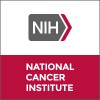
Desferal Administration to Improve the Impaired Reaction to Hypoxia in Diabetes
Diabetes MellitusType 1The general aim of this study is to investigate the influence of systemic administration of Desferal (Deferoxamine [DFO]) on the response to hypoxic challenge in patients with diabetes mellitus (DM). The investigation will elucidate if DFO can restore: the impaired angiogenetic response to hypoxia in patients with type 1 DM. the disturbed respiratory and cardiovascular regulation in response to hypoxia in patients with DM type 1

Umbilical Cord Blood Transplantation From Unrelated Donors
Acute LeukemiaImmune Deficiency Disorder8 moreThis study is a single-center, treatment protocol with 4 possible preparative regimens, designed to validate the process of umbilical cord blood stem cell transplantation at our institution.

The PROLONG Trial - Rituximab Maintenance Therapy in ITP
PurpuraThrombocytopenic1 moreThis study is a two phase study that aims to evaluate if low-dose Rituximab maintenance therapy may prolong the the effect of Rituximab in immune thrombocytopenia.

NATIENS: Optimal Management and Mechanisms of SJS/TEN
Stevens-Johnson SyndromeToxic Epidermal NecrolysesThe NATIENS study is a phase III randomized study to examine the optimal treatment and mechanisms of each of two treatments (cyclosporine 5 mg/kg bid for 14 days versus etanercept 50 mg subcutaneously at day 0 and day 3) versus the current standard of care which is harmonized supportive care for the treatment of Stevens-Johnson Syndrome and toxic epidermal necrolysis (SJS/TEN). SJS/TEN is typically a drug-induced disease in adults with a mortality of up to 50% or higher in elderly adults. Although progress has been made in elucidating strong genetic risk factors that have led to pre-prescription screening and prevention the risk factors for most drugs and ethnicities represented in the United States are currently unknown. Currently there are a number of small observational studies and a non-blinded small randomized study however there is no strong or definitive evidence base to support any one treatment intervention over supportive care alone and this remains considered a standard of care for SJS/TEN. The primary objective of the study is to conduct a randomized double-blind double dummy stratified multicenter phase III study across 24 sites across the Unites States to determine whether two therapeutic interventions (etanercept versus cyclosporine) will improve short-term outcomes associated with SJS/TEN. The primary hypothesis of this study is that both etanercept and cyclosporine will show benefit over supportive care alone and that single dose etanercept 50 mg sc at days 0 and repeated 72 hours following initial dosing will show significant benefit over cyclosporine 5 mg/kg bid and supportive care alone. Our secondary outcomes are to determine the clinical outcomes at 3 and 12 months following initial presentation and to determine the molecular and cellular mechanisms of SJS/TEN through collection of timed samples to include DNA, RNA, PBMCs, blister cells and supernatant and skin. We hypothesize that patients will have significant sequelae identified at 3 and 12 months that will differ between treatment arms and that treatment interventions will significantly impact cytotoxic and cytokine signals with these biomarkers correlating with primary and secondary outcome. We also hypothesize that significant genetic associations will be found in association with drug-induced SJS/TEN. Eligible patients are >/= 18 who meet evidence for SJS/TEN clinical criteria as evidence by erythematous/dusky macules coalescing or denuded skin and blistering with positive Nikolsky sign which is mandatory criteria associated with mucous membrane involvement, prodromal symptoms including fever, myalgia and headache, increasing number of lesions and history of a medication. To continue with the study patients must meet pathological criteria. Randomization will occur by a secure central online computer-generated random number system through REDCap. Subjects will be allocated 1:1:1 to cyclosporine plus best supportive care, etanercept plus best supportive care or best supportive care alone. Patients, treating physician and outcome assessors will be blinded to the allocated treatment. The primary outcome of the study is time to complete re-epithelialization as defined by complete absence of erosion and compromised skin. Time to expected re-epithelialization of 21 days is the maximum healing time with supportive care in SJS/TEN patients which reflects the healing time of adult skin. The primary outcome will be independently assessed by the treating team to include any of a burn surgeon, dermatologist or wound specialist. Disagreement will be solved by independent adjudication by a minimum of two reviewers. Patients who have to discontinue a study medication will be analyzed by intent-to-treat analysis and followed for complications of SJS/TEN as per study protocol. Secondary outcomes of the study include: 1)time to halting of progression of SJS/TEN skin disease. Progression will be considered significant if there are any new blisters or erosions and halting of progression is defined as absence of these criteria with any new lesions; 2) all-cause mortality at 30 days, 3 months and 1 year following symptoms onset; 3) composite cause-specific mortality - outcome including death from sepsis, multi-organ failure and acute respiratory distress syndrome; 4) actual mortality versus expected mortality (as calculated by SCORTEN); 5) Time to cessation of acute ocular involvement (this will be tracked by the same serial photography evaluated by two independent Ophthalmology experts in SJS/TEN eye disease; 6) incidence of infections; 7) hospital length of stay; 8) adverse events due to therapy; 9) serial plasma granulysin, IL-15 concentrations (and other relevant biomarkers);10) Follow-up 3 months and 1 year from initial presentation for physical and mental health complications. For aims 2 and 3 a number of mechanistic studies will be performed on paired samples (DNA, RNA, PBMCs, plasma, blister fluid and skin).

Testing the Addition of KRT-232 (AMG 232) to Usual Chemotherapy for Relapsed Multiple Myeloma
PlasmacytomaRecurrent Multiple Myeloma1 moreThis phase I trial studies the side effects and best dose of MDM2 Inhibitor KRT-232 when given together with carfilzomib, lenalidomide, and dexamethasone in treating patient with multiple myeloma that has come back (relapsed) or has not responded to previous treatment (refractory). KRT-232 (AMG 232) may stop the growth of cancer cells by blocking a protein called MDM2 that is needed for cell growth. Lenalidomide help shrink or slow the growth of multiple myeloma. Drugs used in chemotherapy, such as carfilzomib and dexamethasone, work in different ways to stop the growth of cancer cells, either by killing the cells, by stopping them from dividing, or by stopping them from spreading. Giving MDM2 Inhibitor KRT-232, lenalidomide, carfilzomib, and dexamethasone together may work better in treating patients with multiple myeloma.

A Prospective Multicenter Phase 2 Study of FCR/BR Alternating With Ibrutinib in Treatment-naive...
Chronic Lymphocytic LeukemiaThis is a prospective multicenter phase 2 study designed with the purpose to evaluate the response rate and safety of treatment with FCR/BR alternating with ibrutinib in treatment-naive patients with chronic lymphocytic leukemia.

Combination Chemotherapy in Treating Patients With Relapsed or Refractory Acute Lymphoblastic Leukemia,...
Recurrent Acute Lymphoblastic LeukemiaRecurrent Adult Lymphoblastic Lymphoma9 moreThis phase II trial studies the side effects and how well combination chemotherapy works in treating patients with acute lymphoblastic leukemia, lymphoblastic lymphoma, Burkitt lymphoma/leukemia, or double-hit lymphoma/leukemia that has come back or does not respond to treatment. Drugs used in chemotherapy, such as clofarabine, etoposide, cyclophosphamide, vincristine sulfate liposome, dexamethasone and bortezomib, work in different ways to stop the growth of tumor cells, either by killing the cells, by stopping them from dividing, or by stopping them from spreading.

Venetoclax With Ibrutinib or Acalabrutinib in Pts. With High-risk CLL
Chronic Lymphocytic LeukemiaThis is a single center, open-label, phase II study of venetoclax (ABT-199) added to ibrutinib or acalabrutinib in patients with high-risk CLL who have received at least 12 months of ibrutinib or acalabrutinib monotherapy. The study will estimate the therapeutic efficacy of venetoclax consolidation in patients who have detectable CLL after receiving ibrutinib or acalabrutinib for at least 12 months and who have high risk CLL.

Dose-Escalation Study of Cevostamab in Participants With Relapsed or Refractory Multiple Myeloma...
Multiple MyelomaThis is a phase I, multicenter, open-label, dose-escalation study of cevostamab administered as a single agent by IV infusion to participants with relapsed or refractory multiple myeloma (R/R MM).

Use of T-allo10 in Hematopoietic Stem Cell Transplantation (HSCT) for Blood Disorders
AML - Acute Myeloid LeukemiaMDS (Myelodysplastic Syndrome)4 moreA significant number of patients with hematologic malignancies need a hematopoietic stem cell transplant (HSCT) to be cured. Only about 50% of these patients have a fully matched donor, the remaining patients will require an HSCT from a mismatched related or unrelated donor. Almost 60% of these mismatched donor HSCTs will result in graft-versus-host disease (GvHD), which can cause significant morbidity and increased non-relapse mortality. GvHD is caused by the donor effector T cells present in the HSC graft that recognize and react against the mismatched patient's tissues. Researchers and physicians at Lucile Packard Children's Hospital, Stanford are working to prevent GvHD after HSCT with a new clinical trial. The objective of this clinical program is to develop a cell therapy to prevent GvHD and induce graft tolerance in patients receiving mismatched unmanipulated donor HSCT. The cell therapy consists of a cell preparation from the same donor of the HSCT (T-allo10) containing T regulatory type 1 (Tr1) cells able to suppress allogenic (host-specific) responses, thus decreasing the incidence of GvHD. This is the first trial of its kind in pediatric patients and is only available at Lucile Packard Children's Hospital, Stanford. The purpose of this phase 1 study is to determine the safety and tolerability of a cell therapy, T-allo10, to prevent GvHD in patients receiving mismatched related or mismatched unrelated unmanipulated donor HSCT for hematologic malignancies.
